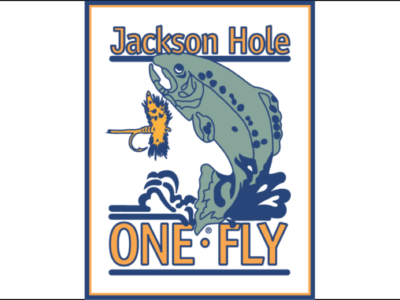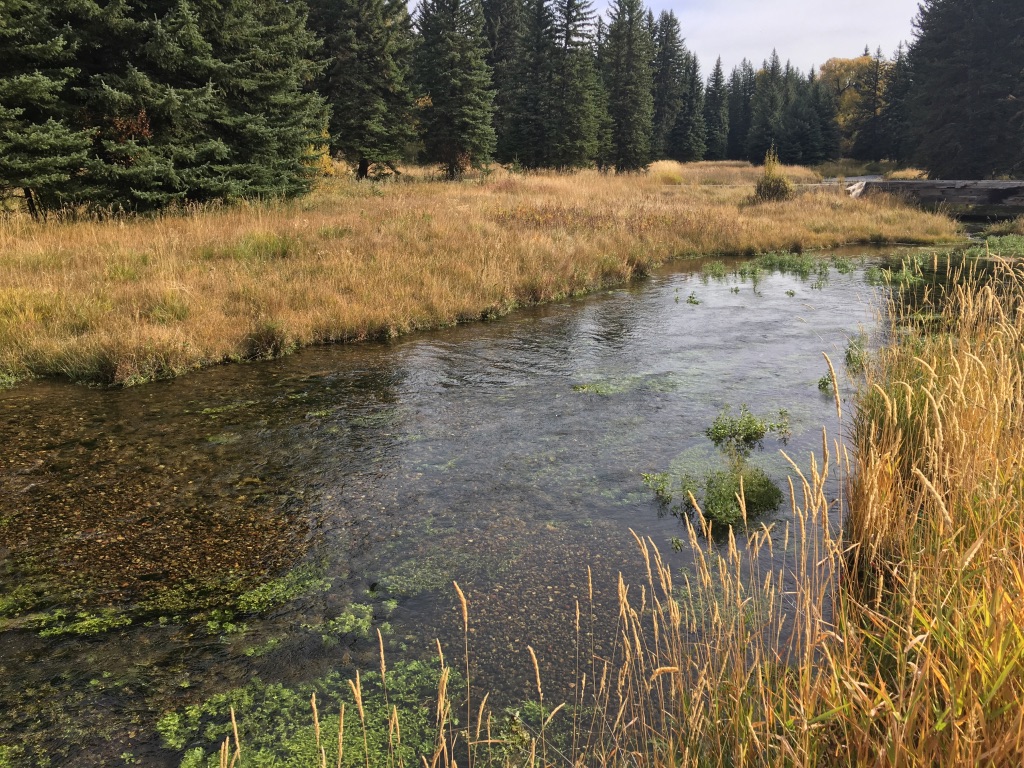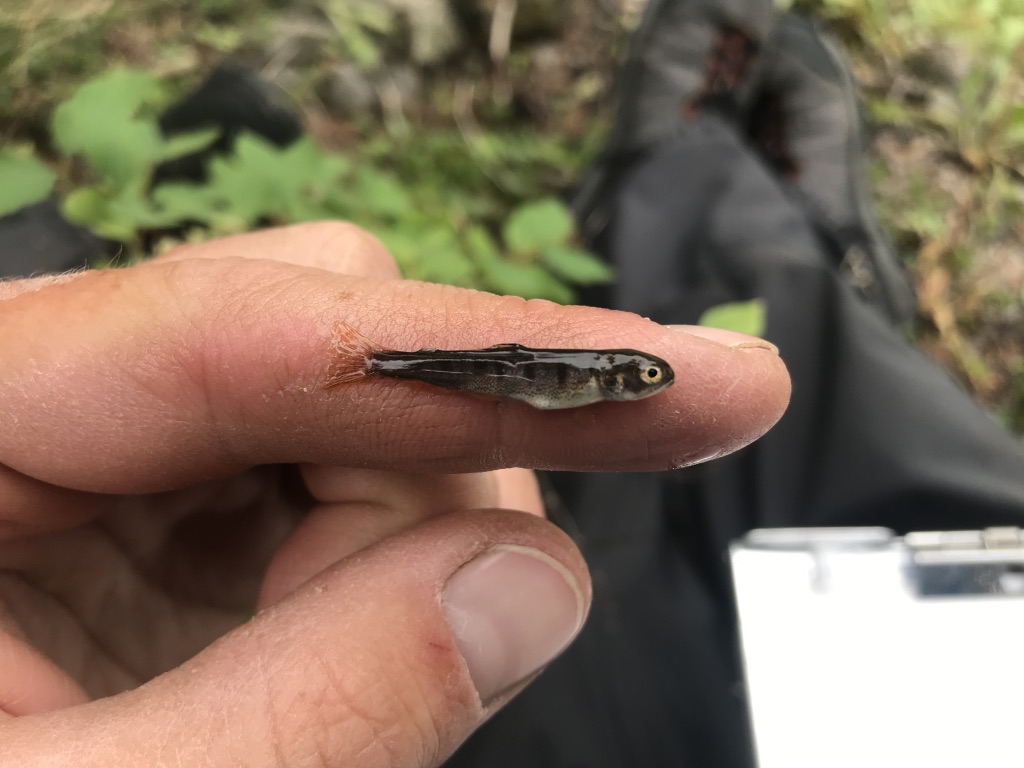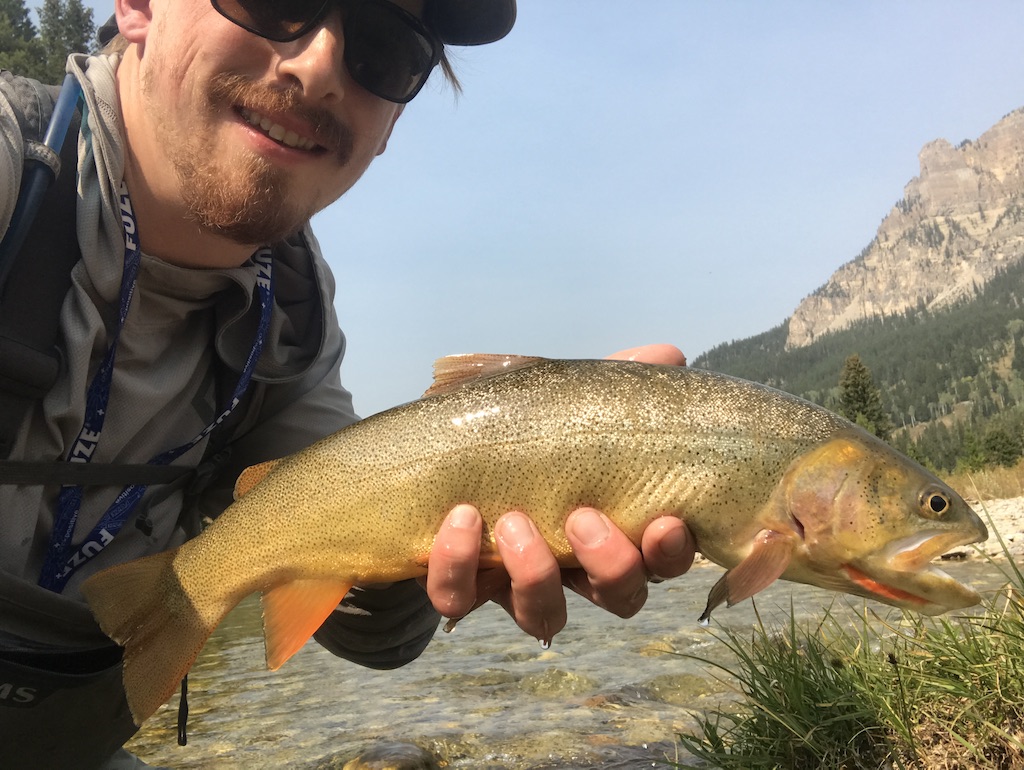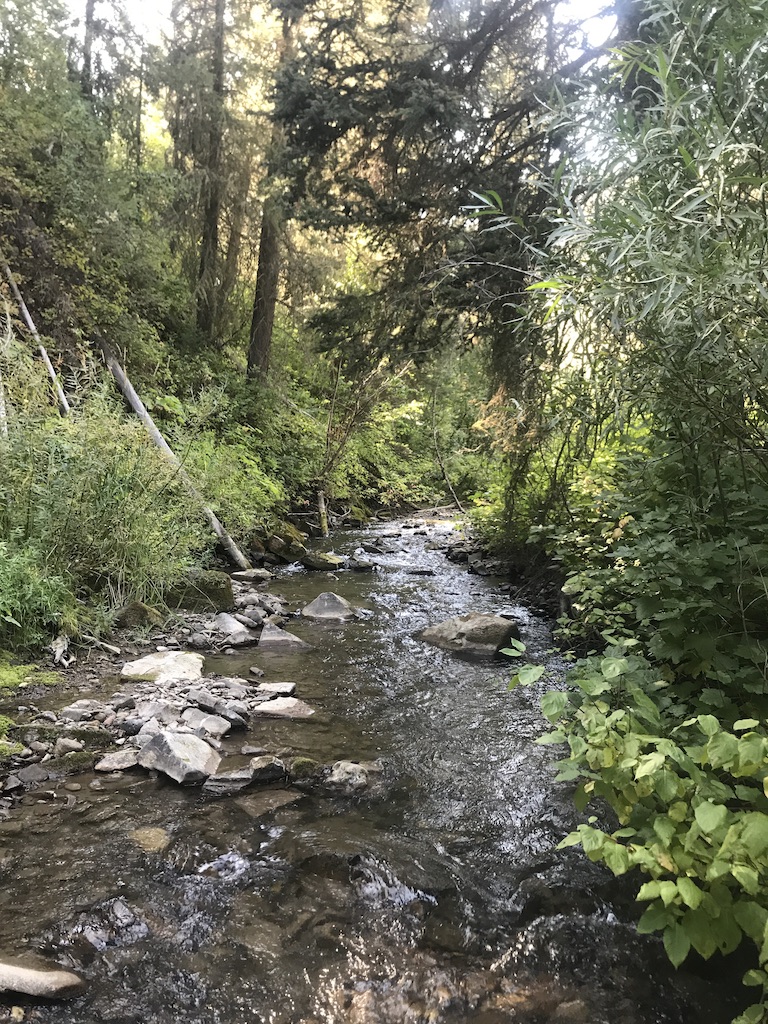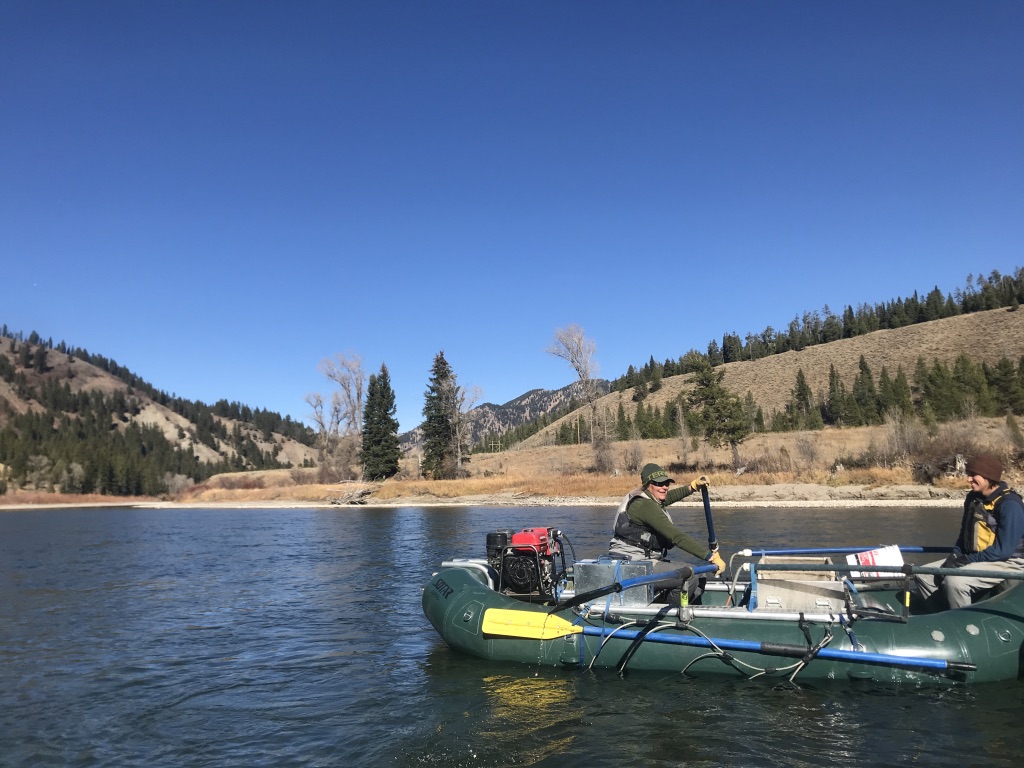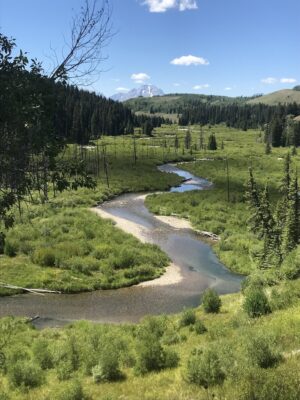 The upper Snake River watershed in northwest Wyoming is characterized by a diversity of stream and river types and is home to the morphologically distinct Snake River cutthroat trout (SRC). SRC are genetically identical to Yellowstone cutthroat trout, whose populations are experiencing rapid declines due to habitat degradation and fragmentation, hybridization with non-native species, and climate change. However, SRC in the Snake River display highly successful natural reproduction; supporting aquatic and terrestrial food webs and a world-renowned recreational fishery.
The upper Snake River watershed in northwest Wyoming is characterized by a diversity of stream and river types and is home to the morphologically distinct Snake River cutthroat trout (SRC). SRC are genetically identical to Yellowstone cutthroat trout, whose populations are experiencing rapid declines due to habitat degradation and fragmentation, hybridization with non-native species, and climate change. However, SRC in the Snake River display highly successful natural reproduction; supporting aquatic and terrestrial food webs and a world-renowned recreational fishery.
Extreme water level fluctuations, high suspended sediment loads, and a very mobile substratum are thought to limit SRC spawning (i.e. reproduction) opportunities in the mainstem Snake River. In the mid-1900s, the Wyoming Game and Fish Department recognized the potential importance of tributary streams to SRC by implementing a robust monitoring program, emphasizing the value of spring-fed streams as critical spawning habitat. Spring-fed streams are widely believed to constitute important trout habitat as groundwater input buffers these systems from seasonal extremes (e.g. freezing and drought) that reduce trout survival. However, extensive redd superimposition (where females construct redds, i.e. nests, overlapping those constructed previously) in spring-fed streams is thought to reduce fry (larval fish) survival, suggesting that SRC populations may be under substantial growth constraints.
We present a multi-faceted approach to evaluate the role of spring-fed streams to SRC population dynamics at both local and watershed scales.
- First, we will evaluate the effects of redd superimposition and observer bias on the accuracy and precision of a long-term redd count monitoring program. Redd counts are an easy-to-implement management tool that allow for greater spatial and temporal coverage in monitoring efforts than other methods. Long-term monitoring is critical to understanding the drivers of population dynamics and evaluating the efficacy of management actions.
- We will then quantify the effect of redd superimposition on the reproductive success of individual maternal parents. We will use genomic techniques (parentage analysis) to assign captured fry a maternal parent who’s redd experienced a known level of disturbance due to superimposition. We will then leverage historical datasets to determine whether redd superimposition scales up to regulate population-level productivity.
- To evaluate the role of spring-fed streams at the watershed scale, we will determine the contribution of spring-fed vs. snowmelt-dominated tributaries to the mainstem Snake River population of SRC. Using genetic stock identification analysis, adult SRC captured in the mainstem Snake River will assigned a natal stream based on genetic similarity to reference populations. We can then describe the relationship between groundwater input and tributary contribution.
- Finally, we will identify the mechanisms underlying the relationship between groundwater input and tributary contribution. Primary and secondary production in streams governs fish growth capacity, which has a strong effect on survival. We will combine direct measures of fish growth with both in-situ and remotely sensed measures of productivity to determine whether growth capacity (and thereby tributary contribution) is related to groundwater input.
The emergent properties of ecosystems are complex and arise from processes that occur on and interact among multiple spatial scales and levels of ecological organization. However, traditional management strategies and research efforts typically aim to describe patterns on just a single scale. These approaches often fall short of identifying the processes that underpin ecosystem and population dynamics, rendering management strategies limited in their efficacy.
Our approach employs a diverse set of techniques that targets multiple spatial scale and levels of ecological organization. Doing so will help further our understanding of spring-fed streams in a highly complex and heterogeneous watershed. Our results will help focus, refine, and prioritize management strategies, habitat protections, and restoration efforts that seek to bolster fish populations in northwest Wyoming.
Gallery
Contact
Jeff Baldock, PhD student
Wyoming Cooperative Fish and Wildlife Research Unit
Department of Zoology & Physiology, University of Wyoming
Dept. 3166, 1000 E University Ave
Laramie, WY 82071
Annika Walters, Assistant Unit Leader
U.S. Geological Survey,
Wyoming Cooperative Fish and Wildlife Research Unit
Department of Zoology & Physiology, University of Wyoming
Dept. 3166, 1000 E University Ave
Laramie, WY 82071
Project Lead
Funding & Partners
Wyoming Game and Fish Department
Jackson Hole One Fly Foundation
Wyoming Wildlife and Natural Resource Trust
UW Biodiversity Institute

